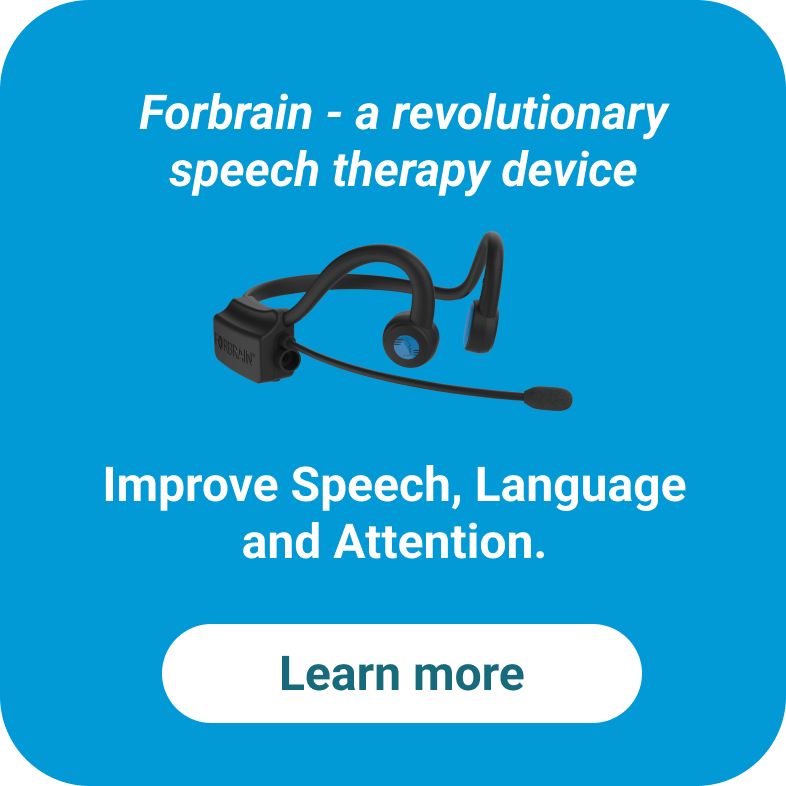Exploring Diverse Speech Therapy Programs and Tools
 Nicolas Cottin - May 13, 2024
Nicolas Cottin - May 13, 2024 
Speech therapy is crucial for children who face challenges in communication, including difficulties in speaking, listening, understanding language, or articulation. These issues can affect a child’s ability to interact with others and succeed academically and socially.
The purpose of speech therapy programs and tools is to provide targeted interventions tailored to each child’s specific needs. These programs and tools are designed to make therapy engaging and effective, incorporating a variety of techniques such as interactive games, specialized exercises, and state-of-the-art equipment. They help therapists in diagnosing and treating speech disorders more effectively and allow for customized therapy plans that can evolve with the child’s progress.
Specialized Therapy Approaches and Tools
There are several innovative programs designed to enhance speech therapy, each employing unique approaches and tools tailored to specific needs. These programs help in making therapy sessions more effective and engaging for children facing communication challenges.
Toobaloo
Toobaloo is an auditory feedback device that helps children hear themselves clearly while speaking. This tool amplifies and directs the child’s voice straight back to their ears, enhancing auditory feedback and improving phonetic and pronunciation skills. It’s particularly useful for self-monitoring during reading or speech practice.
Auditory-Motor Mapping Training (AMMT)
Auditory-Motor Mapping Training (AMMT) is designed to aid children with autism and other conditions that affect speech development. This approach combines intonation (singing) and motor activities (hand tapping) to stimulate the brain areas involved in speech and language production. AMMT helps in building neural pathways that can enhance the ability to produce spoken language.
Sandplay Therapy
Sandplay Therapy offers a creative and non-verbal form of communication that involves the use of sand, water, and miniature figures to create scenes in a sandbox. This method allows children to express themselves symbolically and emotionally, which can be particularly beneficial for those who have difficulties with traditional speech therapy methods.
LSVT
LSVT (Lee Silverman Voice Treatment) is originally developed for Parkinson’s patients but has been adapted to help children, particularly those with motor speech disorders. It focuses on increasing vocal loudness and is adapted to improve articulatory precision. The intensive, repetitive training helps strengthen the neuromuscular pathways needed for speaking.
PROMPT Therapy
PROMPT (Prompts for Restructuring Oral Muscular Phonetic Targets) Therapy involves tactile-kinesthetic approaches where the therapist uses touch cues on the child’s face (jaw, lips, tongue) to support and guide the movement needed for accurate speech production. This method is beneficial for children with motor speech disorders, articulation problems, and other impairments affecting speech clarity.
Considerations for Implementing Speech Therapy Programs
Before implementing any speech therapy program, it’s crucial to consult with a professional Speech-Language Pathologist (SLP). An SLP can provide a thorough evaluation and recommend a tailored approach based on the child’s specific needs.
Here are some tips on choosing the right speech therapy program:
Individual Needs and Preferences
Every child is unique, and their therapy should be too. Assess the child’s specific challenges and strengths in speech, language, and communication. Consider programs that align with the child’s interests and learning style, as this can greatly enhance engagement and effectiveness.
Accessibility and Affordability
Consider the practical aspects of the therapy program, such as location and cost. Look for programs that are easily accessible and fit within your budget. Some programs might offer financial assistance or sliding scale fees, and some might be covered by insurance.
Collaboration with Families and Caregivers
Family involvement is key to the success of any therapy program. Look for programs that encourage collaboration between the therapist and the child’s family. This can include training for caregivers on how to support the child’s development at home and regular updates on the child’s progress.
Flexibility and Adaptability
Select a program that is flexible and can adapt to the changing needs of the child as they progress. The ability to customize the therapy sessions according to the child’s development stages and emerging needs is crucial for sustained improvement.
Scientific Evidence and Effectiveness
When choosing a speech therapy program, it’s crucial to consider the scientific evidence supporting its methods and outcomes. Look for programs that have a strong foundation in research and proven effectiveness for your specific needs. Review studies, published outcomes, and testimonials that demonstrate the program’s success in addressing similar speech and language issues. Programs that are evidence-based are more likely to provide reliable and effective interventions, leading to better outcomes for the child.
Using Forbrain to Help with Speech Therapy
Forbrain is an auditory stimulation headset that uses bone conduction technology and a dynamic filter to enhance speech therapy. By amplifying the user’s voice directly to their nervous system and brain, Forbrain improves auditory feedback. This sharper feedback helps users refine their pronunciation, rhythm, and speech fluency.
Benefits of Forbrain in Speech Therapy:
- Improved Perception: Enhances the brain’s ability to detect subtle differences in sounds, aiding in clearer and more precise speech production.
- Increased Attention and Memory: Helps users maintain focus and better remember verbal instructions or information, crucial for effective learning and communication.
- Boosted Confidence: Users hearing their own improved speech can increase their motivation and confidence in speaking situations.
Forbrain’s effectiveness in reinforcing auditory processing makes it a valuable tool for individuals in speech therapy, educators, and professionals aiming to enhance their communicative abilities.
Final Words
In this article, we’ve explored a variety of specialized speech therapy programs and tools designed to address the diverse needs of children with speech and language challenges. From innovative devices like the Toobaloo and Whisperphone to therapeutic approaches like AMMT, Sandplay Therapy, LSVT, and PROMPT Therapy, each program offers unique benefits tailored to enhance communication skills.
We encourage parents, educators, and healthcare professionals to utilize the insights and tips shared in this article to make informed decisions about speech therapy. By embracing these tools and approaches, you can significantly support and advance the speech and language development of children in your care, leading to better outcomes and enriched communication experiences.




